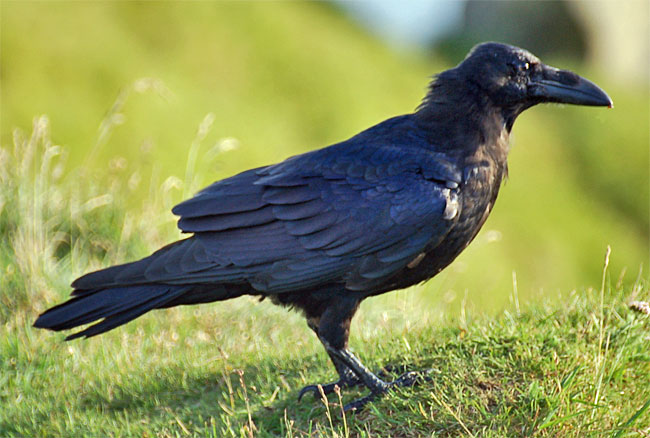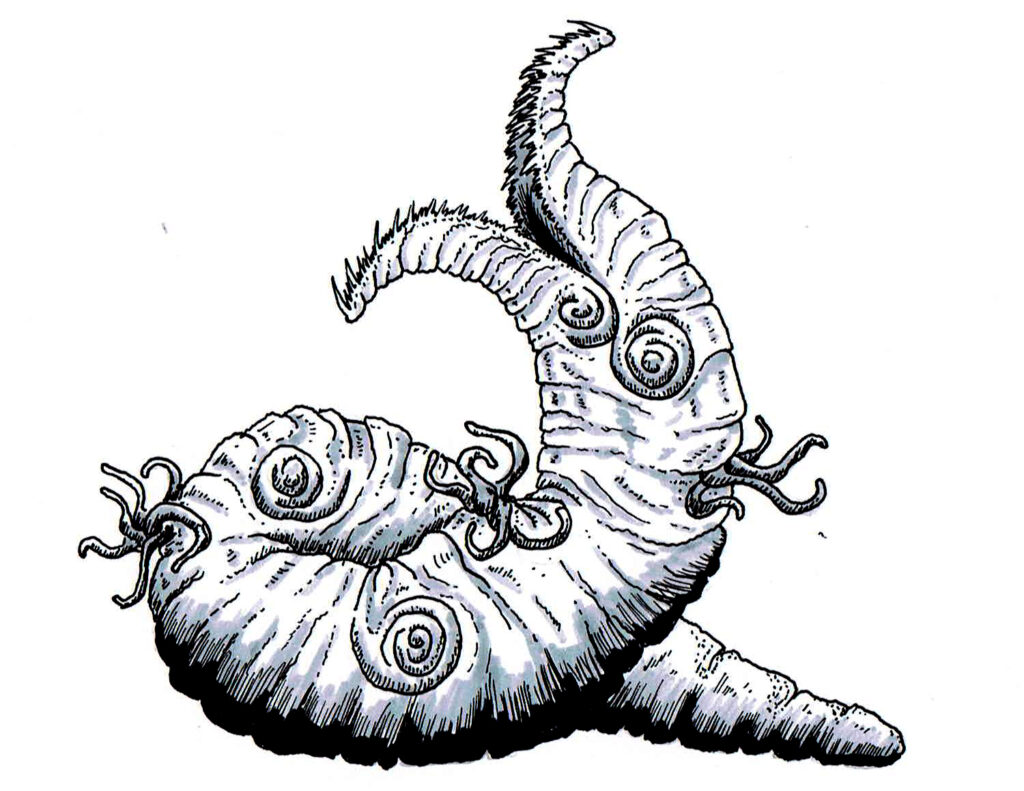Introduction
I recently read a blog post by Patrick Stuart about how a classic D&D monster, the owlbear, doesn’t seem to embody any of the cool traits of either owls (silent fliers with super senses) or bears (honey-loving tree climbers). He goes on to reinvent the owlbear for his own game. But this inspired me to create my own monster for my Dungeon Age world of Harth, the Ravenwolf!
Lore
The ancient world of Harth is home to many strange and dangerous forces, not the least of which are the cosmic horrors known as the yugharim, the Immortal Dreamers, the Engines of Chaos. Their mere presence on Harth (and its moons) causes bizarre mutations such as the Ravenwolf.
Dreaded across the frozen tundras of Harth’s northern wastes, the ravenwolf is a pack-hunter with a child-like yet cruel intelligence. Rather than waste precious energy stalking their prey, they prepare elaborate ambushes tailored to the local wildlife. Which includes humans.
Physical description
A shaggy gray wolf with the sleek black-feathered head and wings of a raven. Their large black beaks can rend flesh and crack bone, but also gently manipulate delicate items and tools with great precision. Their keen vision can spot distant creatures and objects in great detail. They typically keep their wings folded to run through the woods, but will extend their wings for short glides to overcome difficult terrain or to cross treacherous ravines and icy creeks.

Tactics
Ravenwolves live and hunt in packs (1d6 + 3), never alone unless sick or injured. Their preferred hunting tactic is the ambush. They gather objects known to attract prey animals and then lie in wait all around the bait. A ravenwolf will use its Mimicry ability to call out, hoping to draw a target closer to the bait and the ambush.
When hunting humans, ravenwolves often assemble a pile of shiny objects including coins, gems, shards of glass, or polished metal scraps. When a human is spotted in the area, one ravenwolf will call out. Sometimes they mimic a human voice calling for help, or a baby crying, or even the sound of an injured animal. When the human approaches the pile of shiny objects, the ravenwolves all attack simultaneously. Some hunters will go low to sweep the legs, some go high to knock the target over, while others attack the limbs to immobilize weapons. The target is often torn to pieces in a matter of seconds.
Stat Block (5E)
RAVENWOLF: A wolf with the head and wings of a raven. Uses shiny objects or Mimicry to lure prey into ambushes.
| Medium monstrosity | AC | HP | Run/Fly |
| unaligned | 13 | 25 | 50 ft |
| STR | DEX | CON | INT | WIS | CHA |
| 12 (+1) | 14 (+2) | 12 (+0) | 10 (+0) | 12 (+1) | 6 (-2) |
PACK TACTICS. The ravenwolf has advantage on attack rolls against a target if at least one ally is within 5 feet of the target.
MIMICRY. The ravenwolf can mimic sounds it has heard, such as a baby crying or animal calling.
BEAK. Melee Weapon Attack: +4 to hit, reach 5 ft., one target. Hit: 7 (2d6) piercing damage. The target must succeed on a DC 13 Strength saving throw or be knocked prone.
Stat Block (Old School)
RAVENWOLF: A wolf with the head and wings of a raven. Uses shiny objects or Mimicry to lure prey into ambushes.
Medium monstrosity. Unaligned. Save as Fighter 2.
HP 8. AC leather. Move 50. Attacks 1.
PACK TACTICS. The ravenwolf has advantage on attack rolls against a target if at least one ally is within 5 feet of the target.
MIMICRY. The ravenwolf can mimic sounds it has heard, such as a baby crying or animal calling.
BEAK. +2 to hit, reach 5 ft., one target. Hit: 3 (1d6) piercing damage. The target is knocked prone.

